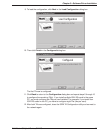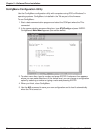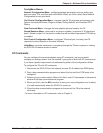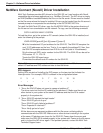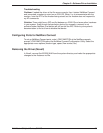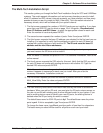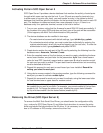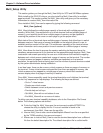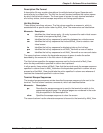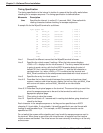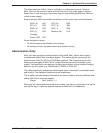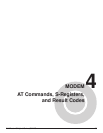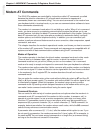
MultiModemISI Hybrid Series, ISIHI-2S 57
Chapter 3—Software/Driver Installation
Activating Ports in SCO Open Server 5
SCO Open Server 5 provides a device database that monitors the activity of serial ports
through which users can log onto the host. If your ISI ports are used by terminals (e.g.,
to allow users to log onto your host), you must create an entry in the system’s device
database that furnishes specific information for the terminals that will be used on each ISI
port. The database is referenced each time a user attempts to log in. If there is no
database entry for a particular terminal, access to the host is denied.
1. Turn on your system, noting that the firmware for each ISIHI-2S loads successfully. If
the firmware for a given ISIHI card does not load, none of its ports will be accessible.
(If this happens, see Multi-Tech’s Administrative Utility section.)
2. The device database can be modified in two ways:
• To create terminal accounts with default settings, type /tcb/bin/ttys_update.
• To customize terminal entries, you must create them individually by entering the
system administrator’s shell (you must be logged in as the root user). To enter the
administrator’s shell, type sysadmsh and press ENTER.
3. Create device entries for each port of the ISI card by selecting the following from the
database menu: Accounts, Terminal, Create.
4. Enter the complete name of the first device you want to create, substituting the base
name, board number, and port letter for the parameters: ttylb. Use a lower case x
value for local DTE (terminal) support and an upper case X value for modem control
for each port you want to enable. The port status can be altered later, but one setting
must be selected at this time.
5. Repeat this process for each port on each board you have installed. Record the
setting you select for each port.
6. Using device names created in the previous section, type the following command for
each port you want to activate: enable ttylbx
7. Repeat this command for each port you want to activate, using the lower case letter
for local terminal use or upper case for modem control.
Note: Only one of the options (e.g., modem control or local terminal access) should
be enabled for any port at one time. For example, you cannot enable ttyl1a and then
enable ttyl1A. To change the status of a port, disable the current status (disable
ttyl1a) and then enable it for the desired status (enable ttyl1A).
Removing the Driver (SCO Open Server 5)
To remove the Multi-Tech Serial Card Driver, you should enter the configuration utility
(e.g., custom for SCO Open Server 5) and follow the instructions to remove the entire
driver and rebuild the kernel without the ISI driver. If it is necessary to re-install the driver
due to I/O address or IRQ overlap, remove the driver first.



